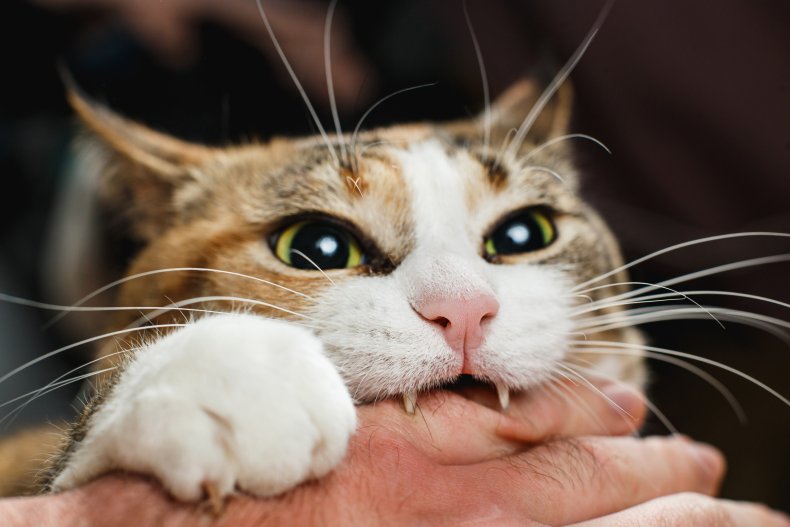Infection
Man infected by previously unknown bacteria species after cat bite
After being bitten by a stray cat, a man in the U.K. developed an infection from a species of bacteria unknown to science.
In 2020, the man, 48, went to the hospital with swollen hands only eight hours after the cat bit him multiple times, says a new paper in Emerging Infectious Diseases, a journal published by the U.S. Centers for Disease Control and Prevention (CDC).
After initial treatment with antibiotics and a tetanus shot, the man returned to the hospital 24 hours later. Doctors discovered that his hands were infected with a bacterial species that had never before been seen and wasn’t present in any DNA database.
ISTOCK / GETTY IMAGES PLUS
“We obtained partial 16S rRNA gene sequence data after block-based PCR as described. Those data did not match any named species in the GenBank database,” the authors wrote in the paper.
Cat bites can transmit a number of pathogens via scratches or bites, when germs from their mouth or claws get into our bloodstream. These include infections from Pasteurella multocida, salmonella, cat scratch disease caused by Bartonella henselae bacteria and even rabies. Around 400,000 cat bites occur each year in the U.S., resulting in about 66,000 visits to emergency rooms.
In the U.K. case, scientists investigated to determine what type of bacteria was involved. They sequenced its entire genome and compared it with other bacterial genomes to find its closest relative. They found that it was about 20 percent different from another genus of bacteria, Globicatella sulfidifaciens, “suggesting a distinct and previously undescribed species,” the authors wrote.
The new bacteria’s closest cousin, G. sulfidifaciens, has not been previously described in medical literature as having infected humans. Another species, Globicatella sanguinis, has been associated with a small number of bloodstream, heart, central nervous system and urinary tract infections. These species have been found to be resistant to several common types of antibiotics, leading the doctors to fear that this new infection would also prove hard to treat.
The infected man had painfully swollen fingers, hands and forearms. The doctors removed the most damaged tissue around the wounds and gave the man three types of intravenous antibiotics as well as oral antibiotics. The treatment was successful, and the man made a full recovery from his encounter with the unknown bacteria.
“In conclusion, cat bites are common sources of zoonotic infection,” the authors wrote in the paper. “This report highlights the role of cats as reservoirs of as yet undiscovered bacterial species that have human pathogenic potential. Currently recommended antimicrobial drug regimens for treating cat bites can be expected to include the Globicatella species described.”
The CDC advises that anyone who has been bitten or scratched by a cat should wash the wound with soap and running water. And, or course, don’t let the cat lick the wound afterward.
Do you have a tip on a science story that Newsweek should be covering? Do you have a question about cat-borne infections? Let us know via [email protected].

